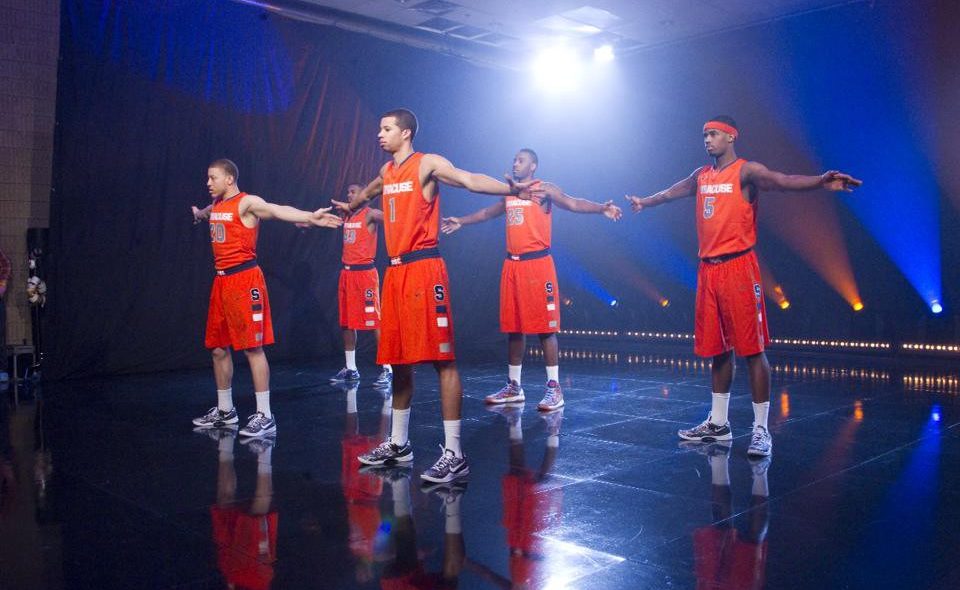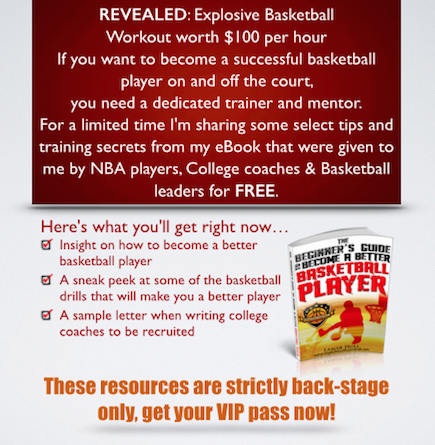Playing Syracuse’s 2-3 Zone Defense Effectively
Have you ever wonder how to play 2-3 zone effectively?
You should learn from the team that does it the best!

Have you ever wonder how to play 2-3 zone effectively?
You should learn from the team that does it the best!
Jim Boeheim has built the Syracuse Orange to be one of the most powerful and prolific teams in college basketball. In 2014, the Orange moved from the Big East to the ACC and had their best start in school history with a 25-game win streak.
Boeheim is also a National Champion and one of only three coaches to reach 900 career wins during his career.
How does he do it?
He implements a stifling 2-3 zone defense that closes in and makes opposing teams feel flustered and claustrophobic. A solid 2-3 defense can really throw off an opposing team and slow down the pace of the game.
Here is a look at what makes Syracuse’s 2-3 zone so effective, how to implement it and also what it takes to beat it.
The 2-3 zone defense is one of the most popular and common setups for teams on defense. It consists of a defense where each player is assigned to a zone, and then they have to move accordingly to where the offense sets up and where the ball is on the court.
Step 1: To set up their 2-3 zone defense, Syracuse will send two guards to the top of the key and position themselves at each elbow. If you imagine cutting the court in half, down the middle, then each guard is in charge of everything in that area, as well as what is above the free-throw line.
Note: If the ball is positioned on one side of the court, then that player will have to guard the ball while the other player shifts slightly to the middle to deny the ball from going inside the paint to an offensive player who is likely sitting at the top of the key. Also, if the ball is at the top of the key, then the closest player will have to guard the ball while the other guard stays in his/her zone.
Step 2: The next two positions that the Orange set up are the forwards. Both of these players will be positioned at the baseline, and they will have to guard all of zone 3 and zone 4 separately (these are the areas all the way from the wing to right below the basket).
Note: If the ball comes to their side, they need to close out quickly to defend, while the other forward will play help-side watching cutters underneath the basket.
Step 3: As for the center, they have the responsibility of watching the entire inside of the paint. Their responsibility is to watch for offensive players cutting through the middle and those looking to post up.
The idea of a 2-3 zone, and where Syracuse really excels, is that they don’t let much inside the paint and it forces you to throw up shots from the outside. However, they close out so well and cover the open space to ensure that defenders don’t find space inside, that it’s incredibly difficult to play the shot clock appropriately and still get off good looks. And if you are a poor shooting team, you are going to have even more problems.
So the question is, how do you play against this type of defensive setup? Especially one as tough and stingy as Syracuse?
The key to any 2-3 zone offense is having a solid point guard who is mature and can control the flow of your offense. If you have a guard who is known for coming down and breaking down defenders in one-on-one situations, but can’t control the pace of the game, then they likely won’t succeed against the 2-3 zone.
Instead, the goal of the 2-3 zone defense is to push the shot clock without allowing good looks inside. And if this is the defense you are playing against, a point guard who can manage the clock without getting flustered will help you greatly.
3 keys to playing against a 2-3 Zone:
1. Spread The Floor
The first option that you need to consider is spreading the floor. Other teams in the ACC and Big East proved that one way to beat Syracuse at the 2-3 zone is to come down and get both offensive guards on opposite sides in order to try and get the defense to commit to places they don’t want to be.
For example, if you have a guard that can make good decisions on the drive, allow them to drive towards the hoop from one of the wings. If the zone collapses, you’ll have either a player on the post that is ready for the drop off, or a guard who will slightly shift to take the driving players spot.
If the latter situation occurs, all it takes is a quick kick out for an open jumper. And what could be better with all this is if the defense doesn’t commit, then the driving player can pull up for a jumper or take it all the way to the hole in hopes of drawing contact.
2. Screens To Get Open
Another set of plays that can be usefully implemented consists of a variety of screens and picks to get teammates open. Keep in mind that since each player is assigned to a zone, a screen may not get the player tons of free space to go to work in a one-on-one mismatch.
However, setting a screen may be enough to get a defender out of position and call for help. When this happens, other defenders will get out of their own position. Two passes later and you’ll be looking at an open pass to the block for an easy layup or dunk.
3. Ball Fakes
Strong & Convincing ball fakes will deceive the 2-3 zone defense. Ball fakes will get the defense to react, causing the defenders to over commit if they think you are going to make a pass in their zone. Ball fakes will cause zone defenders to jump to the ball allowing offensive players to get open in the middle of the zone.
Play to run against a 2-3 zone:
Step 1: – To get this type of play running, have a post player setup at the top of the key, just in front of the defending center.
Step 2: – One guard will then dribble towards the post and use the pick.
Step 3: – Once this happens, the guard can then dish ball to the other guard at the top of the key.
Step 4: – If the zone shifts, the cutter can then run through the zone and you reload while each player rotates one position up towards the ball.
Step 5: – If the defense does not shift, then you’ll have an open cutter taking it to the hoop.
Step 6: – In the event that a defense is on top of things and adjusts correctly to the cutters, then it’s important that the offensive post player reads the defense.
Step 7: – After the post player sets a pick, he too can cut to the hoop in hopes that the defense doesn’t have enough players to follow two cutting players. Or a guard can pass to the post at the top of the key, and then they will turn to the basket and make the best move available. The goal here is to then find a cutter who has snuck their way underneath the hoop, or to set a back-pick for the guard who just passed the ball.
If you’ve gone cold from downtown, there are still a variety of different ways to setup the appropriate attack against the 2-3 zone. Just keep in mind that it all starts with a good guard who can make great decisions.
If you have that, then the rest of your players need to also learn to react appropriately without over committing and continually going through the defense with lots of cuts and screens. In doing so, the zone will likely start to loosen up and you’ll start to find cracks.
On the contrary, if you are playing the Syracuse 2-3 zone defense, your players have to play their zone, play big by spreading their arms and reacting quickly when the offensive team is passing the ball around.
What are other keys to playing in a 2-3 zone?
What are other keys to playing against a 2-3 zone?


LEAVE A COMMENT